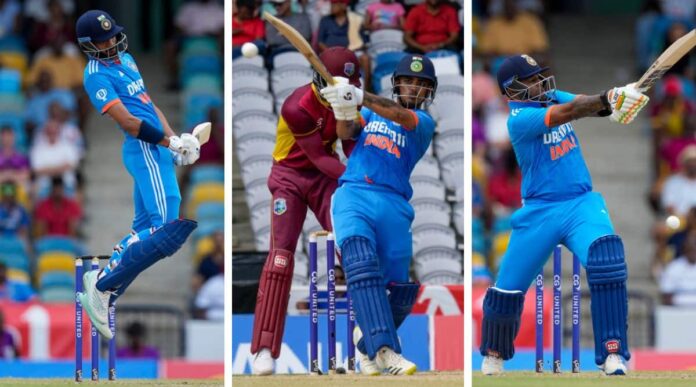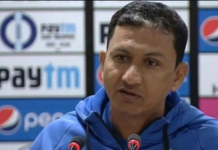In the 2011 World Cup, as the eighth-highest runscorer with a strike rate of just over 86, having hit only three sixes in nine innings, Yuvraj Singh won the Player of the Tournament award, heralded as the man that won India the game’s biggest honour at home.
Six-hitting and strokeplay were not what got Yuvraj his plaudits, instead, it was his match-winning feats in pressure situations, playing the situation by smartly handling the middle overs, manipulating fields and milking bowlers, delaying the attack for a final flourish or setting the stage for finishers.
Exactly two months prior to their opening game in the upcoming 50-over World Cup, the Indian think tank must ask itself, following untimely injuries to KL Rahul, Rishabh Pant, and Shreyas Iyer, whether they have any batsmen who may be able to play even a few of the many roles Yuvraj played for India the last time they triumphed at this stage at home.
Perhaps it is an attribute of the growing presence of T20 cricket that batting in the middle overs in ODI cricket, especially on slow wickets, has become more of a struggle in recent times.
Players who developed their talents in the T20-age have never emphasised or experienced the importance of playing the ‘boring’ middle overs that set up the finish. Navigating long spells of spin, finding gaps in the field, rotating strike, and building partnerships are all age-old attributes for a generation in which middle-order batting has been negated to the role of pinch-hitting. The art of building and pacing an innings is fading.
This, perhaps, explains India’s many experiments that have failed to find a settled batsman at No. 4 or even 5. Over their last nine ODIs, India have tried six different batsmen at No. 4. Among them are the likes of Axar Patel, Ishan Kishan and Suryakumar Yadav, all of whom are more suited to batting in different positions in the shortest format.
Injuries to KL Rahul, Rishabh Pant and Shreyas Iyer have forced the Indian think tank to look out for a batter who may be able to play even a few of the many roles Yuvraj played for India the last time they won a World Cup at home. (File)
“If your openers are out early, you need to build a partnership. (Middle order) batsmen are not simply flamboyant strokemakers that occupy the crease and start hitting. He has to absorb pressure, leave a few balls, and create a partnership. It’s a difficult job, somebody has to be experienced over there,” Yuvraj said in a recent appearance on the Cricket Basu Youtube channel. The lack of those abilities has manifested itself in India’s recent experiments.
यमुनानगर में 2 भाइयों पर हमला: दुकान में आए युवकों ने लाठी-डंडे बरसाए; 40 हजार और सोने की चेन ले गए
How many average over 50 in middle overs?
In all ODIs India have played since 2020, between the 16th and 40th over, only three Indian middle-order batsmen have averaged over 50. Two of them, Sanju Samson (impressively averaging 141 striking at 113 in nine innings) and Ravindra Jadeja, have got a majority of those runs playing lower down the order at 6 or 7. Only KL Rahul, perhaps due to his natural position being that of an opener and his experience in Tests, has put up solid numbers batting in the middle overs.
Question marks over Rahul’s form have not disappeared in the buildup to this World Cup, but the numbers (and lack of other options) point to how desperately India may need him back from the thigh injury he suffered during the IPL. Averaging 95.67 in the middle overs, and 57.75 overall, in ODIs since 2020, Rahul has proven that long-form temperament and ability to build partnerships continues to have relevance in limited-overs cricket.
In 16 innings, he only lost his wicket in the middle overs six times and peppered in a few match-winning innings too. In India’s most recent home ODI series, a 2-1 defeat to Australia, it was Rahul that shone. Under pressure after his ouster from the T20 and Test team, he walked into a slow Mumbai track at 16-3 in the fifth over as India looked like they may struggle to chase down a meagre 188, and hit a match-winning 91-ball 75, stitching partnerships with Hardik Pandya and Jadeja, expertly manipulating fields, rotating strike, turning singles into doubles, and finding the odd boundary.
Confusion at 4
It can’t be. Surely not again? After spending the entirety of their 2019 World Cup campaign having to face questions regarding the lack of a set batsman at No. 4, India find themselves without a credible option in the same position four years on.
Pant and Rahul’s performances in the longest format, and Iyer making the No. 4 spot his own during ODIs in the last few years, meant India had a pack to choose from. But if none are able to recover in time to get some playing time ahead of the World Cup, India now find themselves scrambling to make the best of what is left.
Maybe this is a follow-on effect from the incredibly long rope Suryakumar was handed higher up the order, team management hoping he can make his T20 form work in all formats. Since 2020, he is the only batsman outside of Rahul, Iyer, and Pant to have been given double-digit opportunities at No. 4 or No. 5. His return has been dismal, averaging 25 in 16 innings with a sub-100 strike rate. As reported earlier in these pages, just as he had done in the last two ODIs against West Indies, Suryakumar is now expected to play the finisher role lower down the order.
Among the others, neither Samson nor Ishan Kishan have set the world alight in the six opportunities they have gotten in those positions since. Even if a case is to be made for the returning, perhaps maturing Pandya to be played higher up the order at No. 5, the two-down spot will effectively be a lottery if none of the three injured batsmen return.
Recent concerns regarding India – especially around international assignments – have been the lack of depth in their fast bowling. But with a variety of accomplished spinners on Indian turners, the biggest problem area may end up being the middle order.
“I can be a patriot and say ‘India will win because I am an Indian.’ But I see a lot of concerns in the Indian middle order because of injuries. If those concerns are not resolved, we will struggle, especially in pressure games. Don’t experiment in pressure games,” Yuvraj said.
“The skill work to bat in the middle order is very different from that of an opener. Is there anybody there (in the team management) who is working around the guys that will be playing in the middle order? That’s the question mark – the middle order is not ready, so someone will have to make them ready.”
With only the Asia Cup and a three-match bilateral series against Australia left for India to prepare for the World Cup, the clock is ticking for whoever is tasked with making that happen.
.लुदाना-भिड़ताना सम्ंपर्क मार्ग का नारियल फोड़कर किया शुभारंभ








